| ----- | Fox Trails Sports Area Harry Hope's Cary, IL | ----- | ||
The Fox Trails Sports Area was located on Cary-Algonquin Road, adjacent to the Trout Valley subdivision. In 1962, the former farm was converted into a ski resort. In 1963, swimming, tennis and other summer camp activities were added. In the 1970s, skiing was eliminated and the ski chalet was converted into Harry Hope's, an intimate music venue. Today the property is known as the Fox Bluff Conservation Area. the farm 1843-1962 In 1843, Asahel B. Hinsdale was issued a patent for 260 acres on both sides of Cary-Algonquin Road. That same year, he sold the land to Reuben and Susan Jenne. On the west side of the road, the land was flat and even....ideal for farming. On the east side, the land was on a rocky hillside that sloped down to the Fox River. Solomon and Elizabeth Hamilton purchased the land in 1860. A house, barn, silo and other farm buildings were built on the east side of the road. A path led from the buildings down to the icehouse at the river's edge. Ice was cut from the river during the winter and stored in the icehouse for use during the summer. The farmhouse burned down and was rebuilt in 1893. George and Elizabeth Lowe (my great-grandparents) bought the land in 1907. George was familiar with the farm, having done threshing work there in the 1890s. The family moved into the farmhouse in 1908, and George put the lower acreage, which was flat and tillable, under cultivation. | ||||

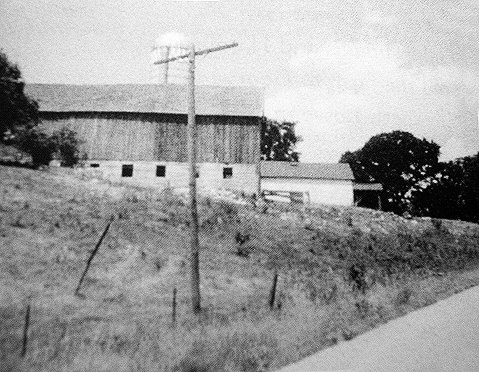

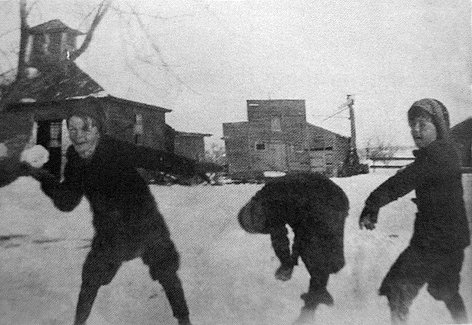
|
In 1919, the Lowe family began to sell the land in preparation for retirement. On the east side of the road, the land along the northern edge was purchased by William Scott Bond in 1919 and 1923. An additional parcel was sold to Leonard Steele in 1926. In 1927, these parcels became part of Leona Farms (later Trout Valley). A portion of the land along the river was subdivided by George Lowe in 1922 and 1924 and became Cold Springs Subdivision and Cold Springs First Addition. The former path to the icehouse became Cold Springs Road. The remaining property was purchased by John Pittner in 1929, and consisted of land across the road and in the area marked "1" in the aerial photo below. | ||||

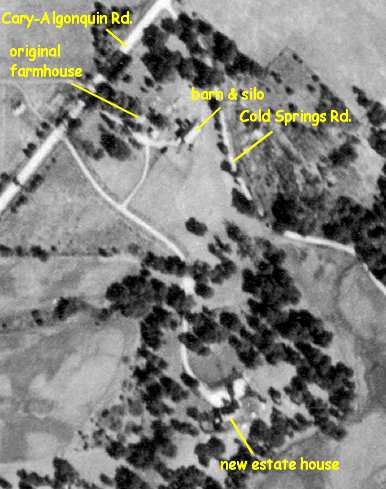
|
John Pittner lost the land to foreclosure in 1931, and it was deeded to John and Fannie Hertz in 1933 following a foreclosure sale. During this time, members of the Lowe family continued to rent the property for farming. Morton and Jane Weinress purchased the land from Hertz in 1935. Two years later, a long driveway and 12-room colonial estate home were built on the hillside. The property was named Jamor Farm, and was used by the Weinress family as a summer home while the farmland was rented out. The land was farmed by Max and Rose Oestreicher in the 1940s, and by Henry and Mary Carroll beginning in 1951. A horse barn was constructed in 1945. The Carrolls purchased the land in 1955 and placed it in a land trust in 1963. In the meantime, the land to the immediate west (marked "2" on the map and aerial photo) was being developed by the John Plain Company, which owned a farm across the road. In the 1950s, a summer home for the owner and recreational buildings for employees and guests were built there. These were not part of the Fox Trails property yet.
| ||||
|
the ski resort 1962-1974 In 1962, Henry Carroll and four other businessmen converted the land east of Cary-Algonquin Road into the Fox Trails Sports Area. In partnership with Carroll were Marvin Frisch, Donald Manhard, Richard Bairstow and Andrew Voisard as general manager. The first phase (the ski resort) opened in December 1962. It cost $700,000 to construct and consisted of 30 acres, a 135-foot vertical drop, seven rope tows and nine ski trails. Halfway through the first season, the two steepest trails were deemed too dangerous and were closed. The other seven trails were named School Slope, Slow Poke, Pretzel Bender, Andy's Dandy, the Glades, River's End and Nosedive. The longest trail was 2,000 feet. The ski area boasted snowmaking equipment and lights for night skiing. It was open every day except Monday until 10:30 p.m. There were 70 employees conducting lessons, patrolling the grounds, and operating the shop and restaurant. Alexander Petrie was hired as the certified ski area manager and ski school instructor.
A Swiss-style chalet was built next to the former horse barn, and a covered walkway connected the two buildings. The chalet contained a ski shop, ski school headquarters, restaurant and cocktail lounge. The second floor had glass observation windows and room for bands and dancing. The ski shop was operated by Hubbard Woods Ski & Skate Shop of Winnetka. | ||||

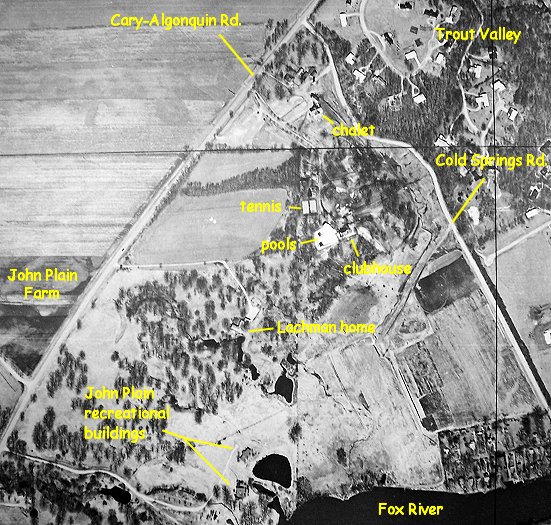
|
In the 1960s, the land to the west was still owned by the John Plain Company. A small piece was put into a land trust in 1961 with the intention of building the elaborate Grand Hotel Villa d'Este. An opening date of July 1963 was given, but this hotel was never built. In the aerial photo above, you can see the two John Plain recreational buildings and the home of Harold Lachman, the company's owner. the chalet 1962-1974 Between 1964 and 1965, the chalet hosted a teen nightclub on the second floor known as the Nevermore. When the crowds got too large, the owners closed this location and opened a new club in a converted barn on Route 31 north of Algonquin. This was the New Place. In 1966, chalet guests could relax at the Trail's End cocktail lounge. During the summer of 1973, the second floor was remodeled into the Fox Trails Theatre, where patrons could purchase a dinner package that entitled them to a play and dinner at a nearby restaurant. A bar and art gallery were located on the first floor.
the summer sports area 1963-1980s | ||||
| ||||

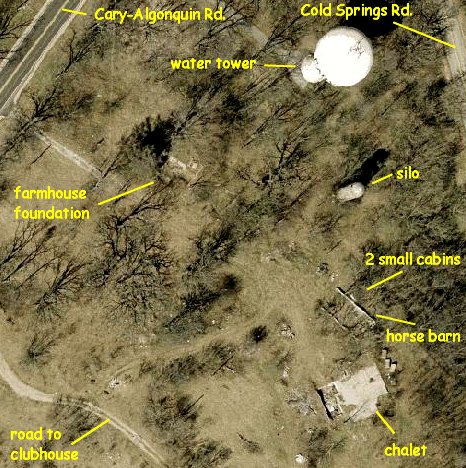
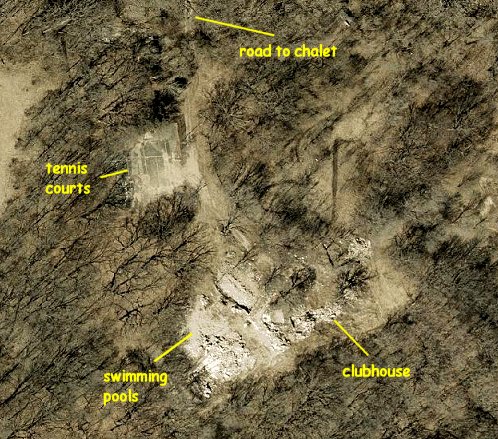
|
the land today The Fox Trails and John Plain land all came under the same land trust in 1980. At this point, the land on the west side of Cary-Algonquin Road was set aside for the Fox Trails Subdivision. In 1995, United Homes announced plans to build the Gentry Ridge subdivision east of Cary-Algonquin Road. The McHenry County Conservation District and the neighboring Trout Valley subdivision both protested this development adamantly. The Conservation District started condemnation proceedings in 1995 to keep the land as open space, and Trout Valley incorporated as a village in 1996 to prevent the subdivision from being built. In 1997, the land was deeded to United Gentry Ridge Land Development LLC and the club buildings were torn down. In 1998, plats for Gentry Ridge Phases 1 and 2 were recorded. In the end, United Homes went bankrupt in 2000 and the Conservation District acquired the land in 2001. The property is now called the Fox Bluff Conservation Area. It consists of 279 acres and a half-mile of river frontage. A hiking trail winds its way up the hill alongside Cold Springs Road, and a picnic shelter, paved trail, restrooms and parking lot are located at the bottom of the hill. Most of the land remains closed to the public for "future site improvements." Coming soon: my 2006 & 2009 photographs!
| ||||
return to:
<<< Cary History